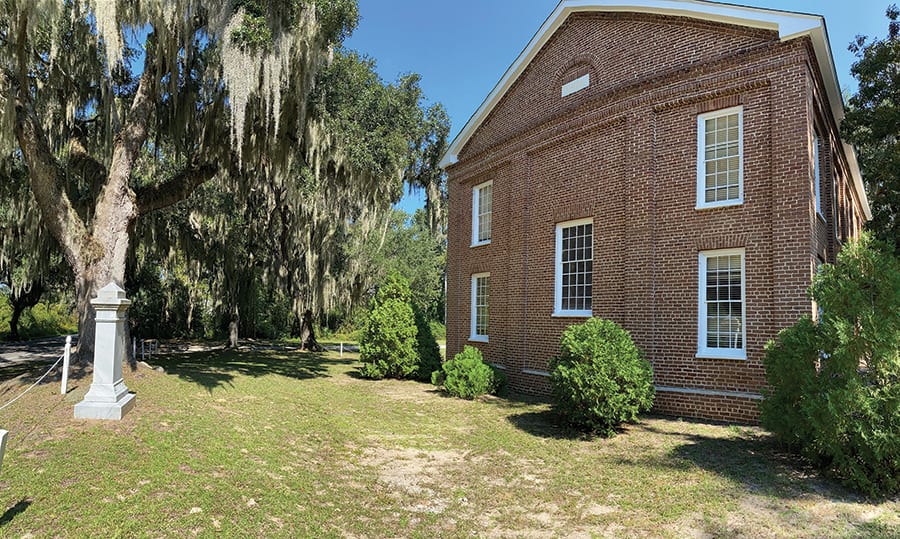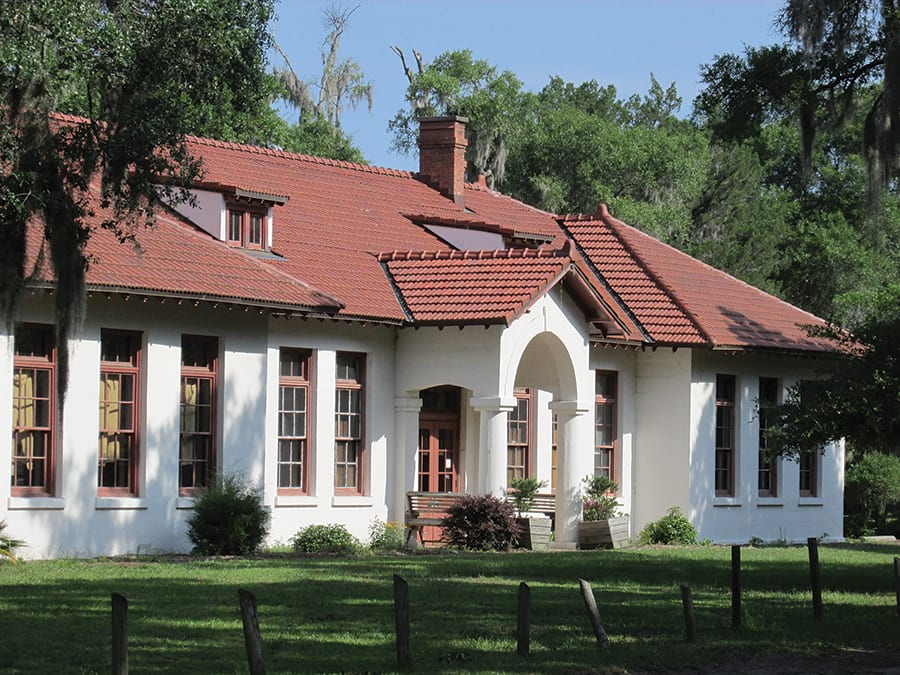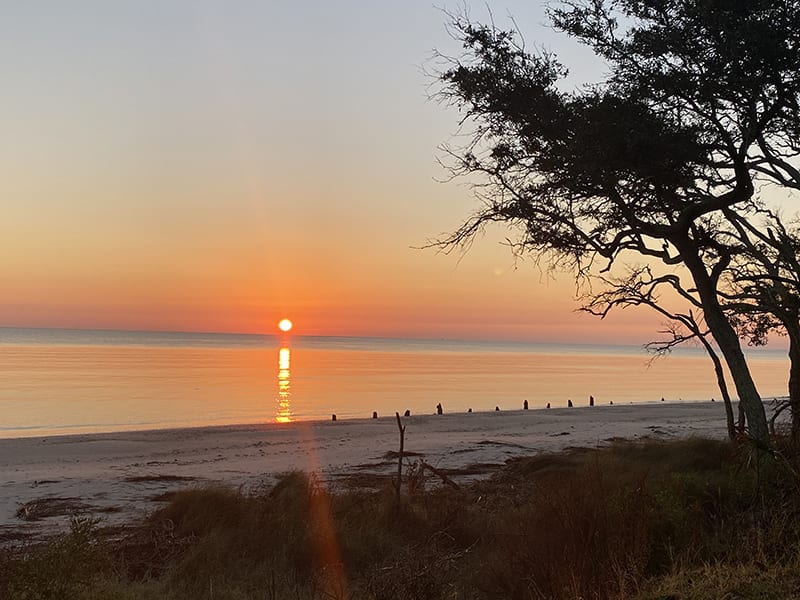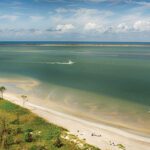Transformation in the Sea Islands
February 1, 2021

St. Helena Island’s historical past resonates today.
story and photographs by Nicole M. Sikora
You won’t see billboards for the attractions on your way to St. Helena Island.
Located about 15 minutes down the Sea Island Parkway from popular Beaufort, S.C. — a little under four hours from Charlotte — it isn’t sprinkled with hotels and beachy chain shops. Instead, St. Helena is the epicenter of some of the most significant moments shaping contemporary American history. And it is telling its story in new and newly relevant ways.
St. Helena’s story took a major turn in 1861. As Union troops advanced on South Carolina’s Sea Islands in the Port Royal Sound, white residents and plantation owners fled, leaving behind property and approximately 10,000 enslaved people, primarily from West Africa. While the Civil War raged on, a social initiative known as the Port Royal Experiment began, setting the stage for hopes and progress still struggling to be fully realized.

Today, Penn Center (formerly Penn School) lies at the geographic, narrative and cultural heart of St. Helena Island. The 50-acre site features sweeping lawns, a nature trail, a dock, the York W. Bailey Museum and other sights. History and Gullah culture lectures, community events, and celebrations are hosted throughout the year. Here lies the Gantt cottage, where Martin Luther King Jr. frequently stayed to meet with other leaders, a safe haven for integrated brainstorming. Significant portions of his “I Have a Dream” speech are said to have been written in the cottage. It’s also a great place to bring a lunch and enjoy your own meditative walking tour among the low country’s massive live oak trees dripping in Spanish moss.
The peaceful atmosphere enfolds a multifaceted and inspiring history. “I think Penn Center is one of the most significant African American institutions on the planet,” says Marion Burns, the center’s interim executive director and board chair. “It was central to two periods of history: Reconstruction and the civil rights movement.”
Reconstruction, the period following the Civil War from 1865-77, was the first civil rights movement, notes Deloris Pringle, a retired educator and Penn Center board member. “This is a one-of-a-kind place,” Pringle says.
Northern missionaries, philanthropists and U.S. military leaders cooperated to establish Penn School, one of the first American schools for formerly enslaved individuals, as part of the Port Royal Experiment to help people transition to a life of freedom. The school opened at a time when it was illegal in many states to teach slaves how to read and write. Additionally, as part of the historic 1857 Dred Scott decision, all persons of African descent were considered noncitizens, whether slave or free. Educators forged ahead, certain of the need to create a future together. Programs were first offered at a former plantation, then taught inside the island’s historic Brick Baptist Church.
Freedmen and white citizens alike were able to buy land in St. Helena, Beaufort and other nearby places. One freedman, Hastings Gantt, donated land to create the larger Penn School campus. As time went on, students assembled buildings on the campus.


Those buildings still stand today. Some freedmen in the region volunteered for military service during the remaining Civil War years. The education, land ownership, service and professional-development initiatives that started in St. Helena Island proved the Port Royal Experiment’s hypothesis: that freedmen and women could create thriving political, economic, intellectual and social systems when access was available, and that their American citizenship was both viable and desirable. It was to be the roadmap for early efforts in our nation’s Reconstruction Era initiative — and inspiration for the Thirteenth, Fourteenth and Fifteenth Amendments to the U.S. Constitution — until Jim Crow racial segregation took hold of the nation in the 1890s.
“They were called slaves, then contraband, then freedmen and then scholars,” says a young ranger whose father attended Penn School, noting it was a life-changing experience. She introduces me to Darrah Hall, still part of the Penn Center campus and today part of the Reconstruction Era National Historic Park. The site opened anew in 2019 as part of the multilocation park.
The park announced the launch of the Reconstruction Era National Historic Network in November 2020, which is expected to grow across the nation to include other partner sites similar to Darrah Hall and Brick Baptist Church, telling the stories of transformation, hope and accomplishment that were part of Reconstruction.

As the Black Lives Matter movement and awareness of racial disparities continue to grow, St. Helena Island serves as a respite — and an important reminder of what can be lost and buried.
“Reconstruction is not taught in schools,” Pringle says. “You only really get that history through places like Penn Center. Everything Martin Luther King Jr. was fighting for, we already had at Reconstruction.”
Knowledge is the foundation for progress, and Pringle notes the early students of Penn School flooded the campus because they wanted to “catch the learning.”
“This is a measure of what freedom can do,” Pringle says. SP
Planning your trip
St. Helena Island is alive with history, spirit and natural charm.

What to do:
Penn Center: Covid-19 has affected hours of operation; call ahead to schedule tours of the museum and visitor’s center. Access to the nature trail and self-guided walking tours of the grounds are free. penncenter.com
Reconstruction Era National Historic Park: Darrah Hall is open during regularly scheduled hours. Later this year, the park will open another site at Camp Saxton on nearby Port Royal Island, where the Emancipation Proclamation was read to the black troops of the 1st South Carolina Infantry on January 1, 1863. nps.gov/reer
Other attractions: The term “Gullah” (or Gullah/Geechee) refers to the culture, language and African American people of the Sea Islands. Check out the historical or storytelling tours in the region to learn more. You can visit the island’s local art galleries and many historic church ruins for visual inspiration. Nearby Hunting Island State Park offers a sizable beach, excellent hiking and a historic lighthouse. Horseback riding and paddling expeditions are available, too.
What to eat: Gullah Grub restaurant features barbecue and low country African American cuisine.
Frogmore Stew originated on St. Helena, named after a dish perfected in the island’s Frogmore neighborhood. Try some at The Foolish Frog or Boondocks Restaurant. Or, pick up fresh local fish through Gay Fish Company or Sea Eagle Market to make your own.
Where to stay: Renting through Airbnb, VRBO or a similar service is highly advisable. Buildings on the Penn Center campus are available through Airbnb. Waterfront residences, such as the place I stayed at Coffin Point Plantation down the historic Avenue of Oaks, are also available for rent, though swimming is extremely dangerous due to oyster beds, wood and other underwater debris.
Getting there: St. Helena Island is just under a four-hour drive south of Charlotte. Traveling to St. Helena from Beaufort requires crossing the Woods Memorial Bridge, one of the few remaining swing bridges in operation over a waterway in South Carolina.
Update: The Penn Center mourns the loss of Marion Burns who passed several months after this story was first published in 2021. Bernie L. Wright is currently the interim director.





